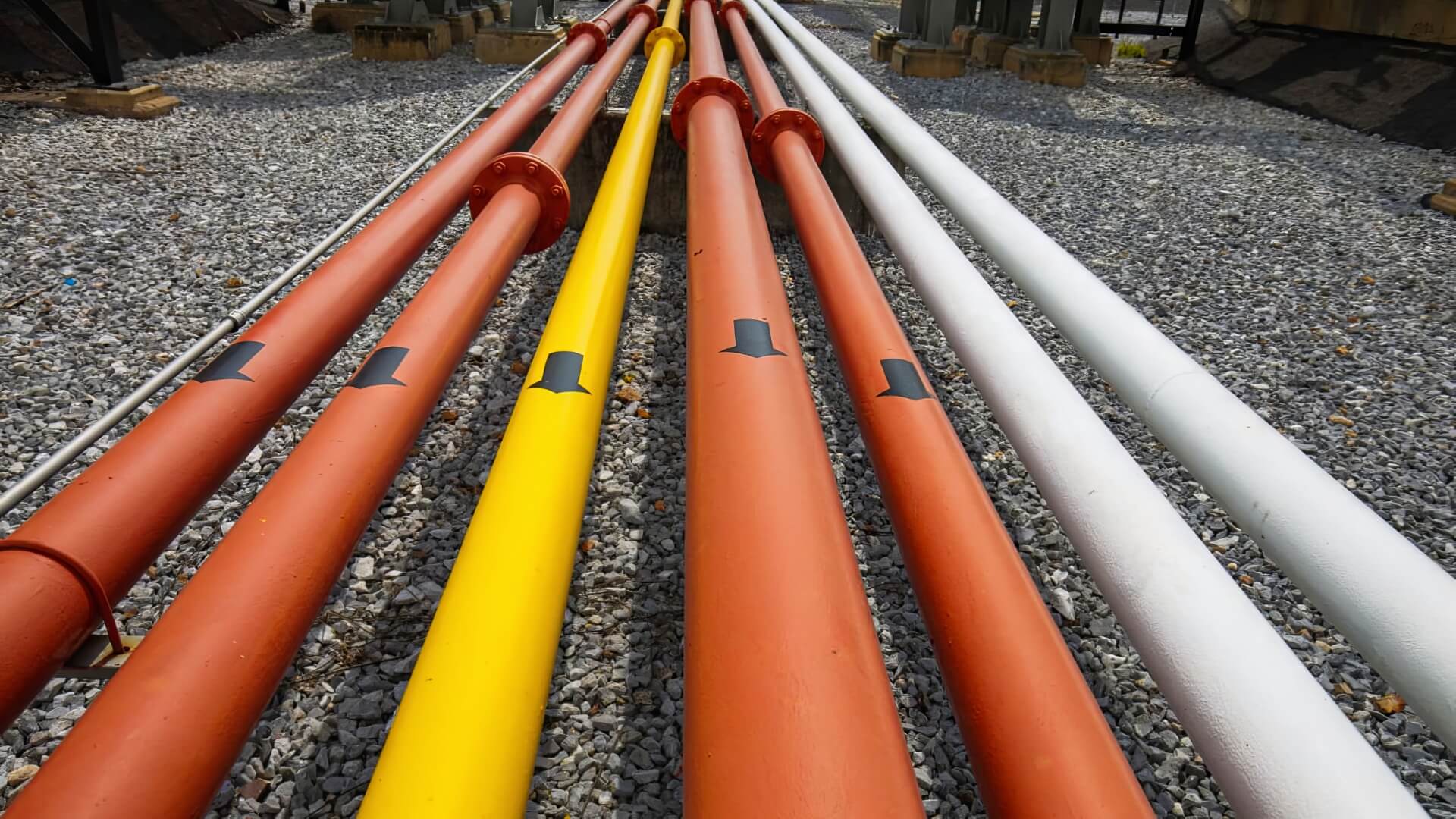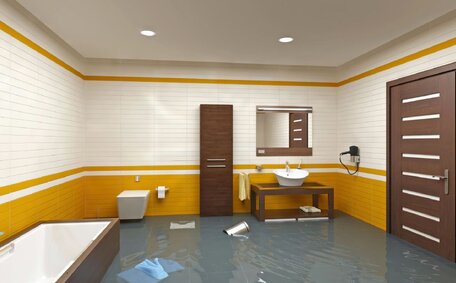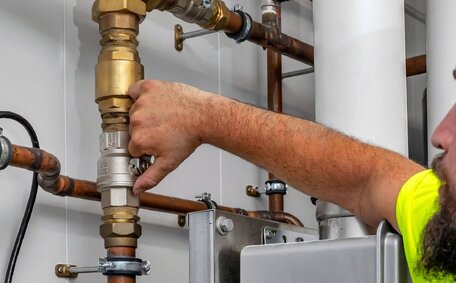Types of Plumbing Pipes and Their Common Uses
Various pipe types are available for different uses in your home, each with specific applications:
- PVC (Polyvinyl Chloride) - PVC (Polyvinyl Chloride) pipes are durable and corrosion-resistant, suitable for cold water supply lines, waste pipes, and vent pipes, withstanding high water pressure.
- PEX (Crosslinked Polyethylene) - PEX (Crosslinked Polyethylene) tubing is flexible, easy to install, and commonly used for supply lines due to its resistance to scale buildup and capacity to handle high temperatures.
- Copper - Copper pipes are corrosion-resistant and ideal for supply lines and drains, suitable for bathroom and kitchen renovations, with superior heat conductivity.
- Galvanised Steel - Galvanised pipes with a zinc coating, making them resistant to some forms of corrosion, were commonly used in older homes. These pipes offer durability but can face corrosion issues over time.
- Cast Iron - Cast iron pipes are among the most durable in domestic plumbing, used for waste lines and vent stacks. They are durable with an expected 50+ years of use.
When selecting the right plumbing pipes for your project, consider aspects such as durability, installation ease, life expectancy, and high-temperature and pressure resistance.
Plastic Piping: PVC, PEX, and PB Options
Plumbing types pipes in your home might include varieties such as PVC and PEX, which are the most commonly chosen, easy-install options for various applications. Their capacity for resisting high water pressure can help ensure they are well-suited for supply lines, drains, and vents.
However, PVC pipes should not be used outdoors or for hot water over 60°C due to UV sensitivity and temperature constraints.
PEX is apt for indoor hot and cold water lines, coping with temperatures up to 93°C, making it fit for bathroom plumbing.
PEX pipe, which can also be easier to install than rigid pipes like copper or iron, offers convenience in handling. However, it is susceptible to UV damage so PEX cannot be used outdoors.
PVC and PEX, compared to other materials, are options that can make your plumbing system efficient, with expected lifespans of more than 50 years under normal conditions. Overall, different types of a plastic pipe like PVC and PEX offer affordable, user-friendly solutions for both residential homes and commercial plumbing projects, albeit with some temperature and UV exposure limitations.
Cast Iron and Vitrified Clay Pipes for Drainage
Cast iron and vitrified clay are the preferred materials for underground drainage systems compared to others. Cast iron pipes are very durable and corrosion-resistant, ideal for subterranean installation. Cast iron drainage pipes have an expected lifespan of over 50 years and are suitable for various soil types.
Vitrified clay, like cast iron, resists corrosion and excels in compressive strength. Choosing the right material, such as vitrified clay, makes it suitable for buried drainage lines.
Despite a higher initial cost compared to plastic pipes, vitrified clay pipes extend drainage system longevity and reduce the frequency of new installations.
Both cast iron and vitrified clay pipes are rigid and robust, tolerating soil movement and heavy loads without failure. This is crucial for subsurface drainage applications. Compared to flexible plastic piping, cast iron and vitrified clay pipes reduce the risk of sagging, fractures, and leaks over time.
When repairing your plumbing system or installing new wastewater lines, cast iron or vitrified clay may be the optimal choice. Consult your plumber to ensure the chosen pipe material matches your needs, taking into account location, soil type, lifespan, and cost.
Selecting Plumbing Materials Based on Application
When selecting plumbing materials for your homes, it’s crucial to consider the application to pinpoint the type pipe best suited for your needs. Here are some key factors to evaluate when choosing residential plumbing pipe options:
Water Temperature
The temperature exposure of pipes in your home heating systems, such as tankless and storage water heater units, is a critical factor. PVC and PEX plastic pipes are not suitable for all applications due to their temperature limits; selecting the right type for water systems and heaters is crucial. Choose copper pipe or stainless steel pipes over plastic options for hot water lines, as they offer superior heat tolerance in the long run.
Water Pressure
Determine if you have low water pressure and required water flow rates for each application. PVC and copper pipes, materials used for their strength, can withstand high water pressure, while PEX has pressure limitations to consider in your selection of pipes and fittings. Use pipe diameters and wall thickness to accommodate pressure needs.
Indoor vs. Outdoor Installation
While PVC and copper PEX pipes can work for indoor plumbing, it’s also clear that plastic degrades from UV exposure outdoors. For external supply lines, use UV-resistant CPVC or copper. Galvanized steel is also recognised for its robust durability, often used as supply pipes.
Pipe Corrosion Resistance
Evaluate corrosion risks associated with your water chemistry and soil conditions. PEX, copper, and stainless steel are recognised as one of the most corrosion-resistant materials. Galvanised steel is prone to rust over time and needs additional coatings.
Engage in conversation with a professional to verify that your type plumbing pipes and pipe fittings align with your residence’s distinct layout and water quality. They can ensure you choose right plumbing materials, which are appropriate and long-lasting.
Installation Considerations for Pipe Types
The installation process, paramount to determine compatibility, is crucial when selecting pipe plumbing types for your system. Always know your plumbing services should be consulted to ensure that plumbing supplies for your system are correctly fitted and configured for durability. There are key considerations around ease of installation, necessary tools and connections, and future maintenance requirements.
Ease of Installation
PEX tubing, a flexible plastic piping, presents an easier installation for plumbers compared to rigid options like copper or galvanised steel. PEX tubing easily bends around corners and obstructions, simplifying installation. However, PEX can be readily secured and clipped, albeit with more specific requirements than certain other materials.
Installation Tools
Installing galvanised or black iron pipe requires specific tools for bespoke cutting and threading. Stainless steel similarly needs professional grade tools. PVC and CPVC pipe fittings benefit from straightforward, user-friendly installation methods like push-fit or solvent-welding.
Future Maintenance
While cost-effective, galvanised steel pipes might require sooner replacement than other materials, such as PEX, due to long-term corrosion. PEX piping lasts for decades but is difficult to access within walls if repairs are ever needed. Take into account the long-term upkeep when choosing the pipe material that best suits your infrastructure.
Engage Moorebank Plumbing’s proficient plumbers to ensure proper plumbing installation, leveraging their expertise in fittings, fixtures, and various pipe types. They can advise on optimal configuration and fittings fixtures based on your home layout, water pressure, appliance connections, and expected maintenance needs.
Sustainability and Environmental Impact
When selecting plumbing materials, it is important to consider sustainability and environmental impact. The recyclability and durability of different pipe types can contribute to more eco-friendly plumbing practises.
Metal pipes like copper, brass piping, and stainless steel are highly recyclable, extending your pipe options for sustainable choices.
At the end of their lifespan, they can be recycled and can made into new pipes or other metal goods. Plastic materials like PVC, CPVC, or PEX serve various plumbing needs but pose recycling challenges, often ending up as landfill waste.
Other Sustainable Factors
Opt for locally-sourced pipes to minimise transportation-related carbon emissions. Selecting pipes for your home’s plumbing made from recycled water content further reduces environmental footprints. Pipe durability also plays a role - longer lasting pipes like copper translate to less replacement waste over time.
Embracing low water usage fixtures, such as efficient toilets and shower heads, along with leak detection systems, promotes sustainable plumbing. Incorporate eco-friendly pipe types and water-efficient fixtures to achieve sustainable, energy-saving home plumbing.
Consult with plumbing professionals to know which plumbing materials are best for potable water and fixtures, striving to minimise environmental impact while satisfying household requirements.






